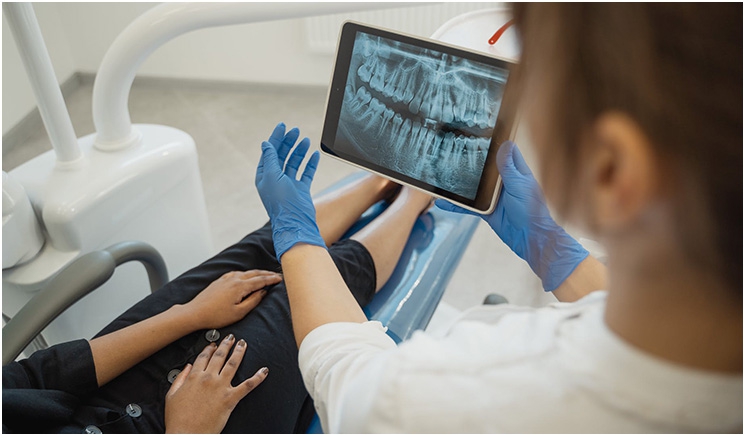
As we begin to approach herd immunity from the COVID-19 pandemic, more and more dental offices across the United States are reporting that practice volume is starting to return to normal. In a March 15 poll by the ADA Health Policy Institute (ADA HPI), approximately 60% of practices said they were open for business as usual, but reported lower volumes than before the pandemic.
As patients become vaccinated, the fear of going to the dental office should diminish. There is a significant proportion of Americans who have delayed needed dental treatment since the pandemic started, creating a backlog of needed dental care that will need to be scheduled in the near future.
Moreover, USA Today has reported a dramatic uptick in stress-related dental conditions during the pandemic, which has significantly increased the numbers of fractured teeth due to stress and increased bruxism.
Coupled with the persistent increase in unemployment in some sectors of the economy, and the loss of dental insurance coverage or budgetary constraints, it will take the dental profession some considerable time to return to pre-pandemic levels of patient care.
The Need for Phased Treatment Planning
To help patients with their dental needs from a restorative and economic perspective, the application of phased treatment planning is a good approach to patient care for someone who hasn’t been in for over a year, or possibly even longer.
From a periodontal health point of view, most patients who have not been in the office for more than a year will need more than a prophy. Using the D4346 or D4355 ADA CDT code may be appropriate for them.
Re-establishing periodontal health in your patients of record is the ideal place to start when they return. This in effect will help them understand that oral health is essential health and that preventive maintenance in the long run is less costly than sporadic care.
For a new patient who may or may not have had any significant dental work in previous years, a phased treatment plan approach is the rational mode of treatment, prioritizing dental treatment in the following manner:
- Treatment of teeth causing pain, swelling, and/or infection on an immediate or emergency basis with extractions or endodontic treatment depending on restorability and patient finances.
- Caries control by treating restorations that are deepest first and that may result in immediate or future endodontic treatment. Less severe or incipient caries can then be treated after periodontal therapy if a comprehensive exam is done at this time, and sequencing of restorative and periodontal treatment can be established at this time using the existing dental software the office uses.
- A comprehensive periodontal exam, followed by a periodontal evaluation, and diagnosis of the current periodontal condition as mentioned above, with recommended treatment appointments and future preventive maintenance visits pre-appointed.
- Completion of more comprehensive dental treatment such as crowns and/or implants after the patient has shown satisfactory improvements in their oral hygiene regimen.
Because of the pandemic, some patients might not accept immediate treatment, or they may slow treatment down due to finances. These financing limits must be considered. The phased treatment plan gives you the flexibility to take care of the most urgent needs first and then follow up with more comprehensive treatment as the financial position of the patient improves.
According to a new survey from Bankrate.com, just 39% of Americans can afford a $1,000 unexpected expense. In 2020, 41% of respondents said they could afford an unexpected $1,000 bill, while 40% said the same in 2019.
By judicious use of healthcare financing through third parties, the phased treatment plan can assist with payments over the time of treatment. Patients appreciate that you have their best interests in mind when you recognize that the pandemic may have caused financial hardship and/or loss of dental benefits due to workforce layoffs or elimination of jobs in the marketplace.
As we return to more normal living due to vaccinations and herd immunity, patients will return to dental offices, and they will be most satisfied with offices that empathize with their current financial condition. This will help guide them to better oral health by utilizing a phased treatment approach that is formulated for each individual’s needs and budget.
Dr. Huot is the founder of Beachside Dental Consultants. He has lectured on topics such as leadership issues, transitioning to an insurance-free practice, common sense office design, proper insurance coding, financial planning, and buying and selling dental practices. His articles have been featured in Dentistry Today, ADA News, and other dental journals. He retired from the US Air Force Reserve Dental Corps after 30 years of military duty. He also served on active duty from 1982 to 1985. He was a private practice owner from 1985 to 2008 and still practices clinical dentistry. Also, he has been a member of multiple dental organizations, serving in many leadership positions, including vice president of the ADA. Dr. Huot is a Fellow in the American College of Dentists, the International College of Dentists, the Academy of General Dentistry, and the Pierre Fauchard Academy as well. He can be reached at drhuot@militarydentist.com.
Related Articles
What Dentists Earn: 2021 Edition
Dentistry Faces a New Economic Climate
Marketing Strategies Will Be Essential to Your Post-Pandemic Recovery











